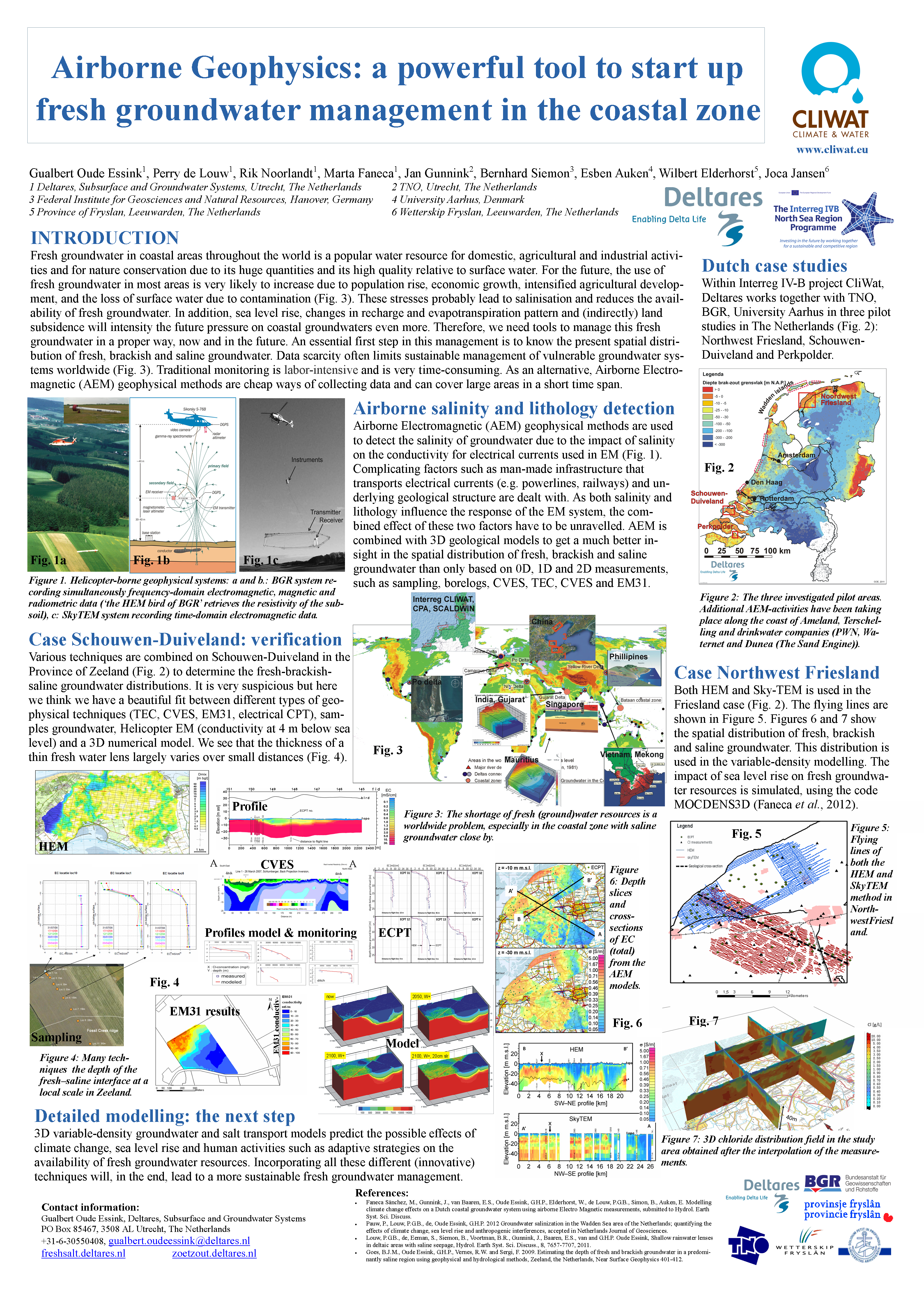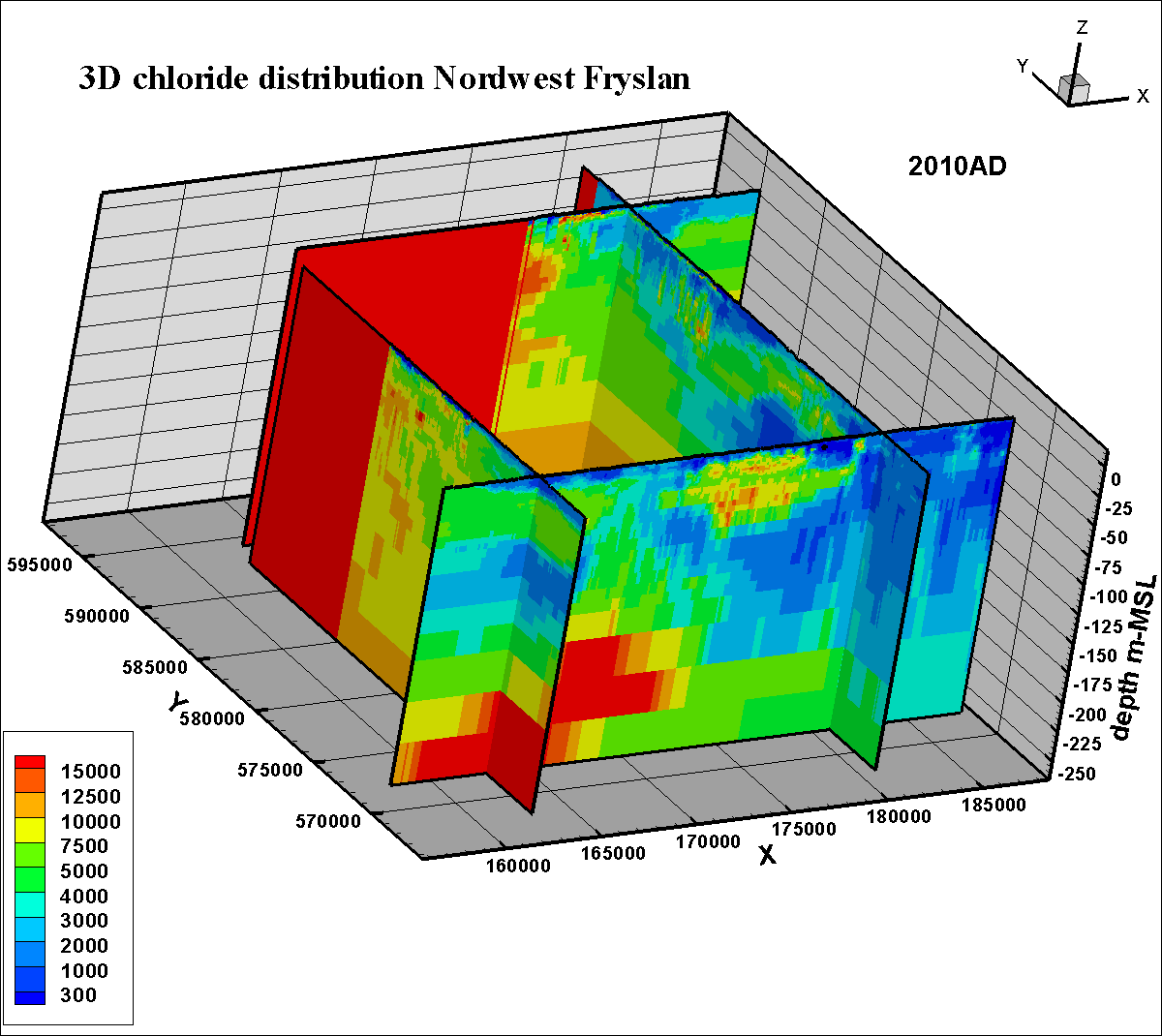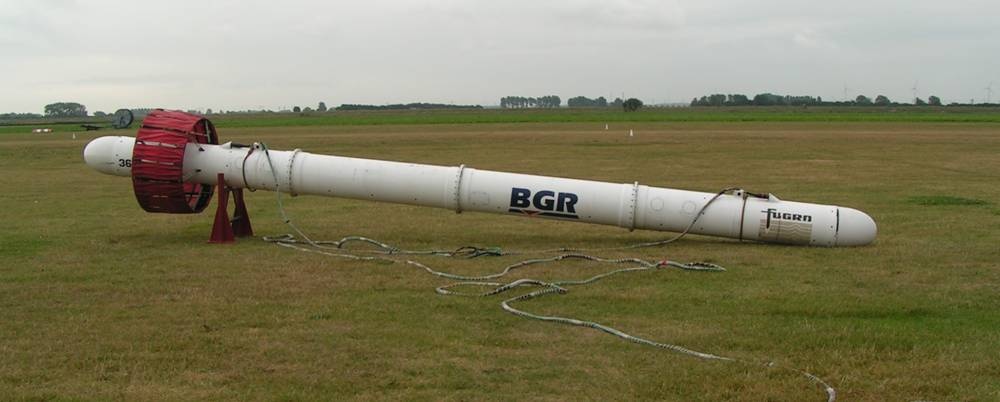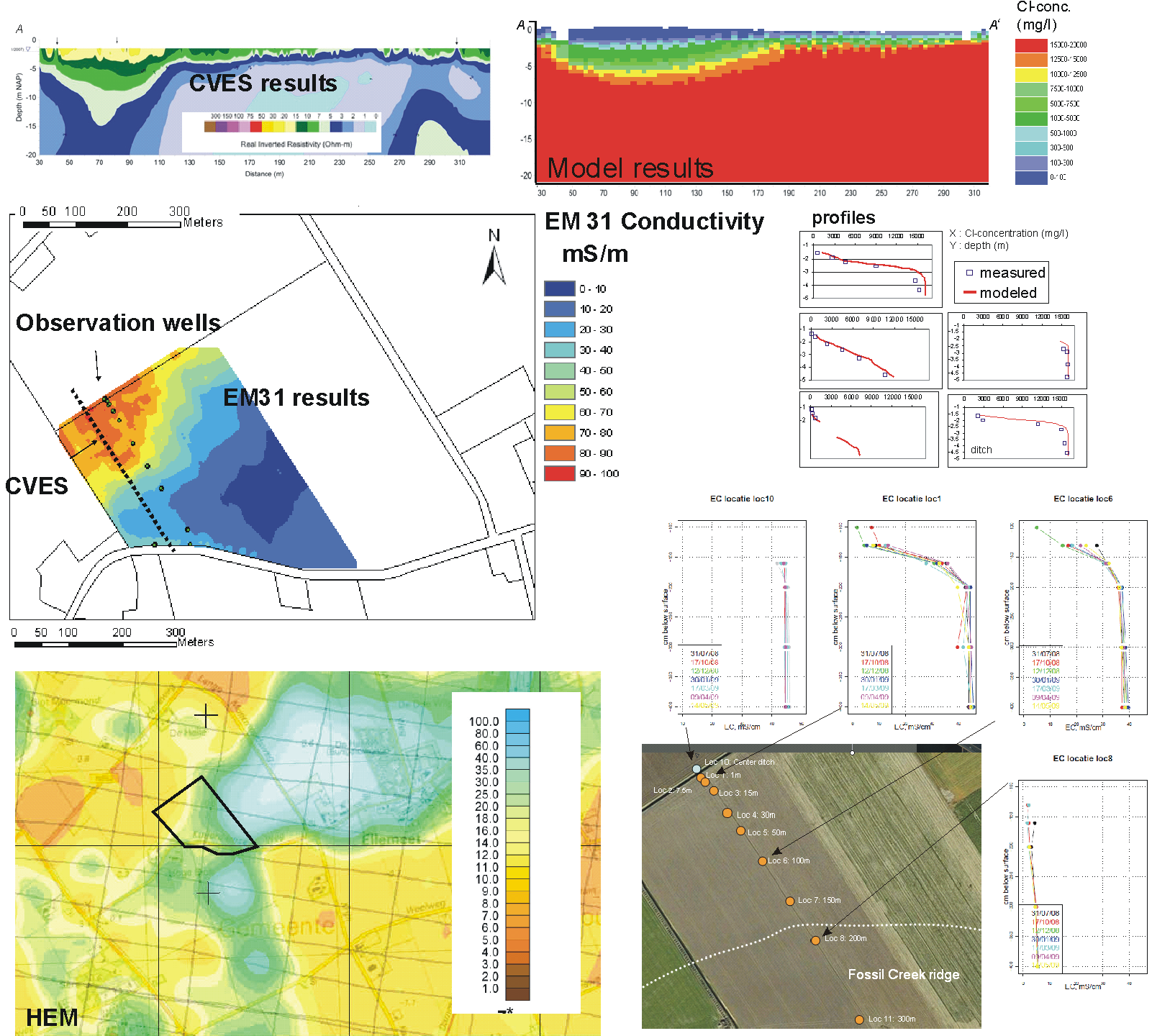- FRESHEM Zeeland ( FREsh Salt groundwater distribution by Helicopter ElectroMagnetic survey in the Province of Zeeland, The Netherlands
- Video: The challenge of saline groundwater
- Poster Airborne Geophysics: a powerful tool to start up fresh groundwater management in the coastal zone download
Artikelen:
Delsman, J., Van Baaren, E.S., Siemon, B., Dabekaussen, W., Karaoulis, M.C., Pauw, P., Vermaas, T., Bootsma, H., De Louw, P.G.B., Gunnink, J.L., Dubelaar, W., Menkovic, A., Steuer, A., Meyer, U., Revil, A., Oude Essink, G.H.P., 2018. Large-scale, probabilistic salinity mapping using airborne electromagnetics for groundwater management in Zeeland, the Netherlands. Environ. Res. Lett. 13. doi:10.1088/1748-9326/aad19edownload
Van Baaren, E.S., Delsman, J.R., Karaoulis, M., Pauw, P.S., Vermaas, T., Bootsma, H., De Louw, P.G.B., Oude Essink, G.H.P., Dabekaussen, W., Gunnink, J.L., Dubelaar, W., Menkovic, A., Siemon, B., Steuer, A., Meyer, U., 2018. FRESHEM Zeeland - FREsh Salt groundwater distribution by Helicopter ElectroMagnetic survey in the Province of Zeeland, Deltares report 1209220. Utrecht, Netherlands. download rapport
- Faneca Sànchez , M., Gunnink , J.L., van Baaren , E.S., Oude Essink , G.H.P., Siemon, B. , Auken, E. , Elderhorst, W. , de Louw, P.G.B. 2012. Modelling climate change effects on a Dutch coastal groundwater system using airborne Electro Magnetic measurements, Hydrol. Earth Syst. Sci., 16, 4499-4516, doi: 10.5194/hess-16-4499-2012. download
- Some ppt sheets on Airborne Geophysics and fresh-salt groundwater: download
- Presentation (Dutch) Effecten van klimaatverandering op het kustnabije grondwatersysteem van Noord-Fryslân download
- Animation: 3D fresh-saline distribution North-west Fryslan
|
| |
Fresh groundwater in coastal areas throughout the world is a popular water resource for domestic, agricultural and industrial activities due to the availability of huge quantities and its high quality relative to surface water. For the future, the use of fresh groundwater resources is very likely to increase due to population rise (especially in megacities), economic growth, intensified agricultural development, and the loss of surface water due to contamination. The negative effects of salinisation is detected in the exploitation of groundwater for drinking water purposes and groundwater for agricultural use and nature conservation. In addition, sea level rise and the associated changes in recharge and evapotranspiration pattern will intensity the pressure on this coastal groundwater. |
|
Data scarcity often limits sustainable management of these groundwaters worldwide. Mapping and monitoring the current spatial extent of fresh groundwater resources normally requires detailed in-situ information of large areas, which is seldom available. As an alternative, remotely sensed data are a cheap way of collecting data and cover large areas in a short time span. In this research, Airborne Electromagnetic (AEM) geophysical methods are exploited. These AEM methods are especially suited for detecting the salinity of groundwater due to the impact of salinity on the conductivity for electrical currents used in EM (Fig. 1 and 2). Complicating factors include the effect of man-made infrastructure that transports electrical currents (powerlines, railways, etc.) and the effects of the underlying geological structure. Both salinity and lithology influence the response of the EM system and it is therefore important to be able to unravel the combined effect of these two factors. |
|
Deltares works together with institutes such as TNO, BGR, Aarhus Geophysics and Fugro to make these AEM methods suitable and accessible for stakeholders for mapping fresh groundwater resources over large areas. Pilot studies in The Netherlands, Denmark and Germany within the framework of the Interreg IV-B project CliWat have been set up to combine Airborne EM results with detailed 3D geological models to get a much better insight in the spatial distribution of saline groundwater as well as in the geological setting. |
Information: gualbert.oudeessink@deltares.nl, perry.delouw@deltares.nl, geertjan.nijsten@deltares.nl




